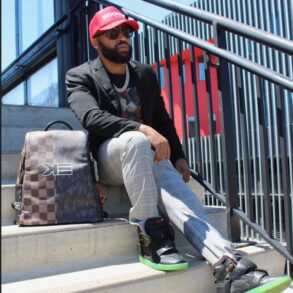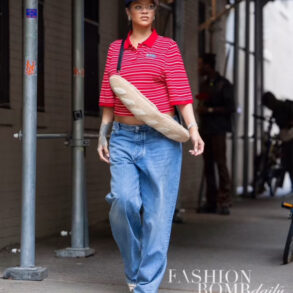Latest figures from Marks & Spencer released today show a better-than-expected 75% rise in profits for the high street retailer in the first half of 2023. The firm – which is in the process of implementing a turnaround strategy after returning to the FTSE 100 this summer for the first time in four years – revealed a 5.7% growth in its clothing and home sales, with particular demand for denim and summer outfits, a sign that recent efforts to revamp the fashion department have been fruitful.
This isn’t the first time M&S has managed to reverse its fortunes after getting stuck in a style rut. Here, we look back at the fascinating evolution of fashion at M&S…
When Marks met Spencer
Michael Marks arrived in England in 1884 and opened his first Penny Bazaar market stall in Leeds the same year, inspired by the slogan, ‘Don’t ask the price, it’s a penny’.
In 1894, he teamed up with Tom Spencer, a cashier from Dewhirst wholesalers, and the Marks & Spencer business was born. The firm expanded rapidly, with the pair opening 12 Penny Bazaar shops, 24 stalls and a warehouse in Derby by 1901.
Following the deaths of Spencer in 1905 and Marks in 1907 – and a long legal battle – Simon Marks (son of Michael) became chairman in 1916.

Designs for life
In the 1910s, M&S stocked haberdashery items such as thread and buttons, as well as accessories including gloves and jewellery, but women’s clothing wasn’t introduced until 1926 with the arrival of the drapery department selling garments such as petticoats and pullovers.
The retailer extended its apparel offering over the next decade to include daywear and party dresses, along with dressing gowns and swimsuits, with a design department set up in 1936.
“What set Marks & Spencer apart when they first introduced their clothing line in the late 1930s was that they thoroughly tested the quality of their goods before selling them,” says fashion writer Caroline Young, author of The Fabulous Frances Farquharson: The Colourful Life of an American in the Highlands.
“And they introduced innovative new fabrics – something that was particularly appealing in the years after the Second World War, when rationing was still in place into the ‘50s.”
The company opened a lab to develop new textiles and employed French design consultants, she explains: “They copied the latest styles coming out of Paris, such as Dior’s New Look, but recreated them in the latest fabrics, and in a more wearable style for the high street.”

Moving with the times
During the fashion revolution of the Swinging Sixties, M&S attempted to keep up with evolving trends, introducing women’s workwear, a ‘Junior Miss’ section aimed at a younger audience and a range of tights in response to the booming popularity of shorter skirts.
In 1966, the retailer enlisted ‘60s superstar Twiggy to model a dress with a hemline described as ‘well above the knee’. Knitwear proved popular with shoppers in the 1970s and the brand embraced bold-shouldered power dressing in the 1980s.

Continuing its supermodel associations, M&S tapped Claudia Schiffer and Linda Evangelista for ad campaigns in the 1990s, while Amber Valletta appeared on the cover of British Vogue in 1996 wearing an aqua blue shirt from the brand.
The company expanded internationally, but sales started to falter as the new millennium approached and the brand was favoured by middle-aged shoppers, known for more frumpy fashions.

The Noughties comeback
After years in the fashion wilderness, M&S managed to revamp its reputation with the help of some famous faces.
British designers Katharine Hamnett and Julien Macdonald contributed to the newly-launched Autograph sub-brand in 2000, while Sex and the City costume designer Patricia Field collaborated on a sell-out collection in 2008.

Twiggy returned in 2012 to design her own clothing range, with model Rosie Huntington-Whiteley signing up the following year (her M&S lingerie line is still going strong) and fashion icons Alexa Chung and Holly Willoughby working on their own edits.

“After years of trying and going through several clothing bosses, they have finally hit on the right formula, and the key is to be modern and flattering, without being too faddish,” says Young.
“Recent hits have included their denim lines and floral maxid resses, and with the inclusive sizing, people are more confident they can find something right for them.
“As consumers are more conscious of following a greener ethos by rejecting fast fashion in favour of quality clothing that lasts, M&S hits the right spot in its pricing and favouring of timeless classics.”
British actor and style icon Sienna Miller (main Image) is the latest celeb drafted in to create a collection for the brand, cementing Marks & Spencer’s status as a high-street fashion leader – and helping contribute to their recent financial success.
Words: Prudence Wade, PA, on behalf of TheIndustry.fashion
This post was originally published on this site be sure to check out more of their content.






